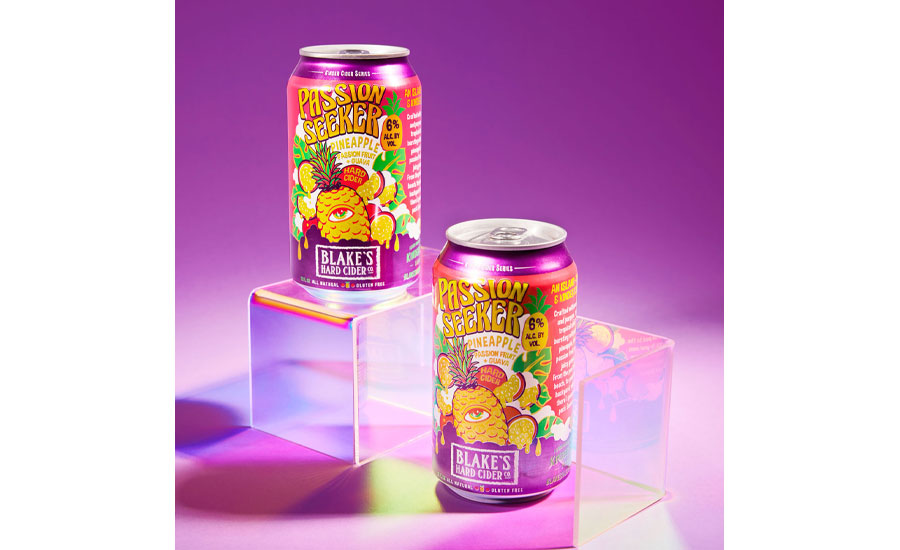2023 Beer Report | Local appeal lifts hard cider segment
Local cideries, flavor combinations support competitive mindset

Image courtesy of Artifact Cider Project
Whether it’s looking to support the local economy, support their community or reduce their carbon footprint by purchasing local foods, Americans have made their affinity for farmers markets known as these markets proliferated across the United States. According to the Farmers Market Coalition, farmers markets went from fewer than 2,000 in 1994 to more than 8,600 currently registered with the USDA. Americans support of local extends beyond farmers market. A niche segment in the beer market, hard ciders have found favor with consumers, particularly among regional brands.
“Local and regional cideries are driving growth in the hard cider market,” says Grace Wood, senior analyst at New York-based IBISWorld.
Brian Sudano, managing partner at New York-based Beverage Marketing Corporation (BMC), also calls attention to the lift the segment receives from local brands.
“Hard cider continues to be driven by local players and new flavor offerings,” he says.
Cambridge, Mass.-based Artifact Cider Project exemplified this when it launched Feels Like Home, a spin-off brand by the name of the cidery’s perennial fan favorite cider that was only available in Massachusetts.
Available this past fall, the Feels Like Home series features four flavors ― Classic, Blueberry, Double Rum and Extra Juicy ― designed to remind imbibers that home is where you can find it, the company says.
“It’s really exciting to have a cider so popular and recognizable that it can carry its own brand,” said Soham Bhatt, co-founder and head cidermaker at Artifact Cider Project, in a statement at the time of the launch. “With Feels Like Home, we can focus on imbibers who crave easygoing, juicy, and delicious ciders all year long while continuing to deliver the steadfast Artifact Cider Project drinkers the complex, daring ciders they love. Each line is crafted with the same high standard of quality, attention to detail, and forward-thinking mission that Artifact Cider Project is known for, all while highlighting the uniquely different ends of the cider spectrum.”
Scott Scanlon, executive vice president of BevAl Vertical at Information Resources Inc. (IRI), Chicago, notes that hard ciders also offer consumers a change from traditional beer, flavored malt beverages (FMBs) and wine. Beyond that alternative, Scanlon points to its varying flavor profiles.
“The appeal of cider is its unique flavor profile relative to other offerings due to most ciders being made from apples,” he says. “Additionally, dry ciders are a nice middle ground between traditional beer and hop-forward beer by arguably giving consumers a little more taste while maintaining some crispness relative to a bitter IPA for example.”
Jon Berg, vice president of Beverage Alcohol Thought Leadership at Chicago-based NielsenIQ, adds that fruit flavors are popular throughout the segment.
“Various fruit flavors are in the mix for most large brands, but apple derivatives are still responsible for most of the business,” Berg says.
Hard cider’s also appeal to consumers with allergen concerns.

Image courtesy of Blake’s Hard Cider
“Hard cider remains a key product group for gluten-free consumers, with local and craft hard cider brands allowing [gluten-free] consumers to participate with brands in similar ways to other consumers interacting with craft beer,” says Nathan Greene, a consultant with BMC.
Strong competition
Compared with other beer segments, hard ciders dollar and case sales remain niche. In total U.S. multi-outlets for the 52 weeks ending Jan. 1, hard cider sales were $474.5 million, a 3.4% decrease from the previous year. Case sales also were in decline, posting an 8.7% decrease.
Analysts note that the hard cider segment not only is competing within the overall beer market, but with other beverage alcohol counterparts.
“Hard ciders face competition from up-and-coming fruit-flavored beers, canned cocktails and hard seltzers,” IBISWorld’s Wood says.
In addition to competition, IRI’s Scanlon notes that the premium pricing of hard ciders has impacted the segment’s ability to grow.
“The biggest challenge for ciders is being priced at a premium coupled with the sustainability of mainstream light beers and success of FMBs, teas, and some seltzers,” he says. “Ciders are somewhat of a niche within BevAl and consumers are simply choosing other options more regularly.
“For example, among consumers who purchase cider, over one-third also purchase craft beer, seltzer, sparkling wine, whiskey, and FMBs somewhat frequently,” Scanlon continues. “Since overall consumption has not really expanded, cider’s growth is somewhat hindered.”
Despite these challenges, IBISWorld’s Wood highlights how hard cider producers can remain relevant despite these challenges.
“Cideries will need to get creative with their flavors, just as competing beverage producers are,” she says. “Other fruit flavors like mango, passionfruit and mixed fruit will continue to emerge.”
Contributing to this flavorful opportunity is Blake’s Hard Cider, Armada, Mich., when it launched Passion Seeker, a limited release as part of its Kinder Cider Series. A fruity, tropical summer release, Passion Seeker was created with a base of freshly pressed Michigan apples combined with the exotic flavor trend of passion fruit along with ripe pineapple and fragrant guava with balanced sweetness, the company says.
IRI’s Scanlon explains that hard ciders are likely to release more blends and hybrids that feature proven flavor profiles to remain on-trend.
“For example, peach, rose and bourbon align with successful offerings from the highly co-purchased segments of craft beer, sparkling wine, and whiskey respectively,” he says.
Looking for a reprint of this article?
From high-res PDFs to custom plaques, order your copy today!






